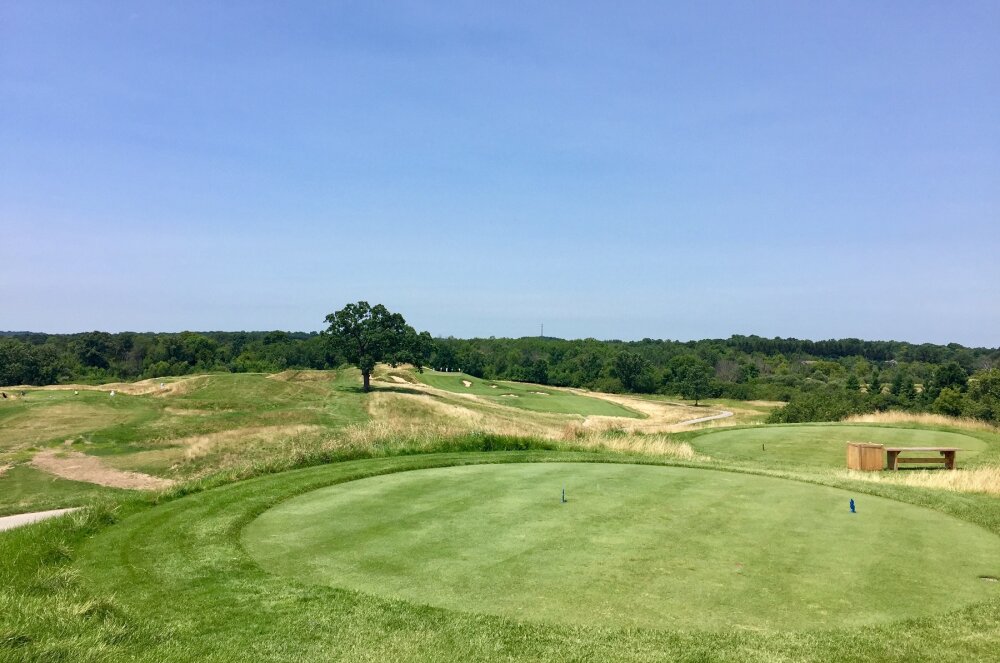
For decades, contemplating a "U.S. Open course" has struck a certain amount of fear into golfers. Magazines have long made "Average Joe Golfer Plays U.S. Open Course, Gets Humiliated" articles a staple of their pre-tournament coverage. It's become predictable by now: ridiculously narrow fairways and pool table-like greens bring golfers to their knees and send their scores skyward.
But what's it like to play a U.S. Open course just a month after the last putt has dropped?
Golf Vacation Insider publisher Craig Better and I went to Erin Hills Golf Course to find out.
The High Notes
U.S. Open-quality golf for all. Erin Hills, being the public course to host America's most ancient golf championship, serves many more masters than the traditional super-private venues, which count memberships of just a few hundred, at most. As such, once the Open circus left town, the club took a two-week pause to get the course ready for public play, which restarted in earnest on July 1. Golf Vacation Insider Publisher Craig Better and I played it on the morning of July 17, and we were blown away at how immaculate the place was. The only signs that a huge tournament had been held recently was the odd skeleton of an off-course hospitality structure. The course was spectacular, and the greens were some of the best we'd ever putted on a course of any kind.
Every day at Erin Hills is "Leg Day." Erin Hills is well-known for its walking-only policy, which the course supports with a robust and knowledgeable caddie corps. Caddies earn their gratuities here, as Erin Hills is one of the more invigorating walks you'll experience on a golf course. The naturally rumpled terrain is such that Dr. Michael Hurdzan, Dana Fry and Ron Whitten tended to situate tees on natural high points and green complexes on more saddle-shaped ground. This means you'll walk uphill from a number of greens en route to the next tee box. But invariably, the view from those tee boxes is well worth the extra workout your calves will be getting.

It's not all about length. Much was made of Erin Hills' supposedly ridiculous length in the lead-up to the U.S. Open. And to be sure, the 7,800 Black-tee figure on the scorecard (which actually leaves out some tees used in the U.S. Open) really pops out. Being a scratch golfer who would probably rank near the back of the pack in driving distance on Tour, I elected to play Erin Hills from a comparable yardage to the pros. And as I suspected from watching on TV, the course plays considerably shorter than the gaudy total numbers, for two reasons:
First, a lot of that extra length is tied up in the par fives, which all tip out at more than 600 yards. But all of them play at least partially downhill, which mitigates more of the distance than you might think. People went crazy over Brooks Koepka's 379-yard 3 wood off the tee on 18 in the final round, but factoring in the elevated tee on that hole, the helping wind and firmness of the fairways, it was effectively a 295-yard "normal" shot (which, don't get me wrong, is still stout).
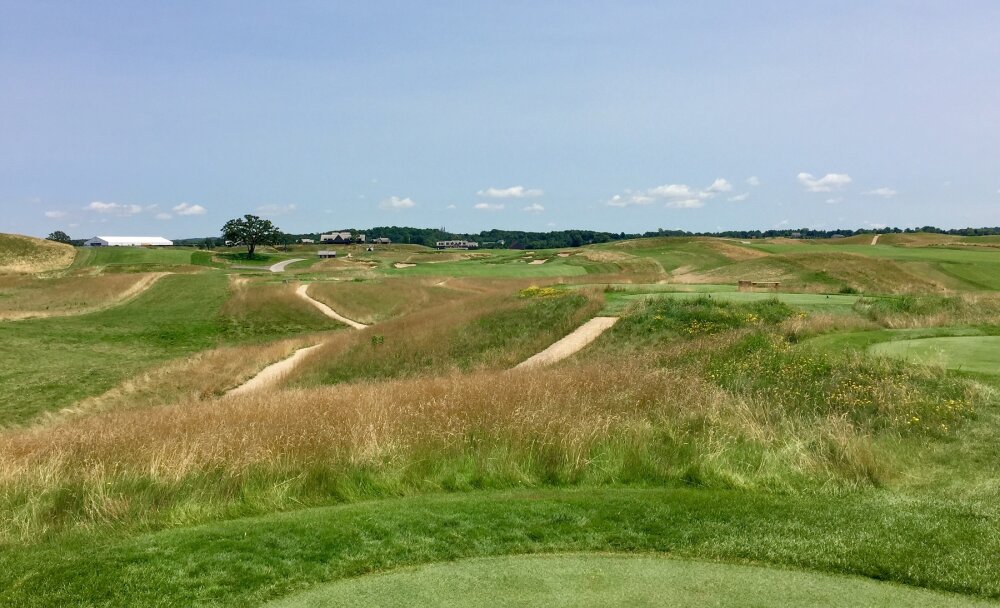
Second, the aforementioned uphill walks to tee boxes mean that many other drives go downhill as well. If you catch one on the screws off the tee of a hole like the third or 11th, you'll be very pleased to have hit your drive 20 or 30 yards farther than you usually do. Landing in the thick rough (to say nothing of the really heavy stuff, which is Lost Ball City) can rob you of 50 or more yards on some tee shots.
Furthermore, much of Erin Hills' character lies in its shorter holes. The short par-4 second, with its small pushed-up green, is one of the best holes of its length I have ever seen. The devilish short par-3 ninth deserves all the accolades it's received. And the complicated 15th is a superlative and versatile short par four.
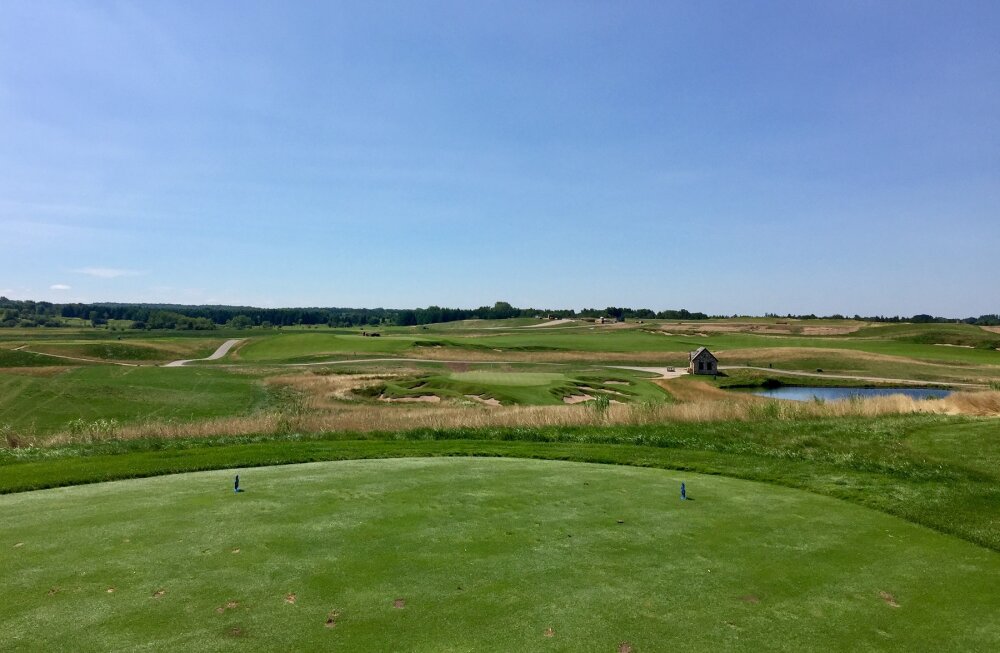
A classy, complete experience. The night before our round, Craig and I took advantage of Erin Hills' on-site accommodations. They are, in a word, perfect. We stayed in the main Lodge, in rooms that were both cozy and well-appointed. The halls of the Lodge are adorned with old-timey framed golf photos, the bar downstairs is open late and there are fire pits out back for enjoying the cool Midwestern evening. The compound-style layout of Erin Hills makes it feel like a secluded village devoted entirely to the enjoyment of golf. It is easy to sense your own excitement at being there reflected in the faces of other guests.
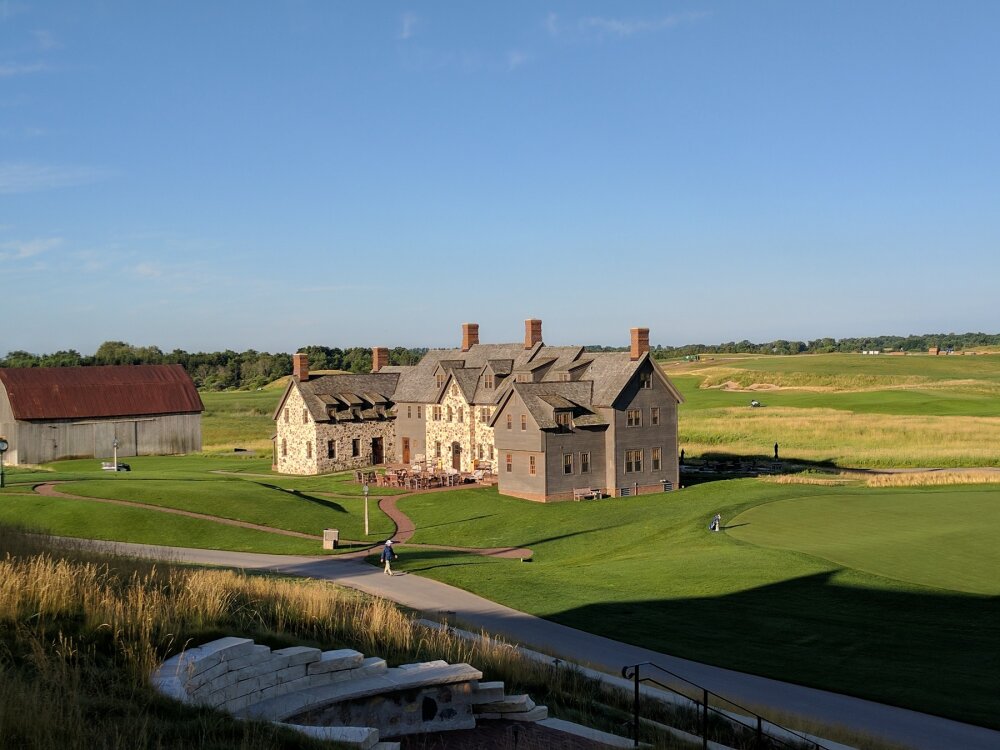
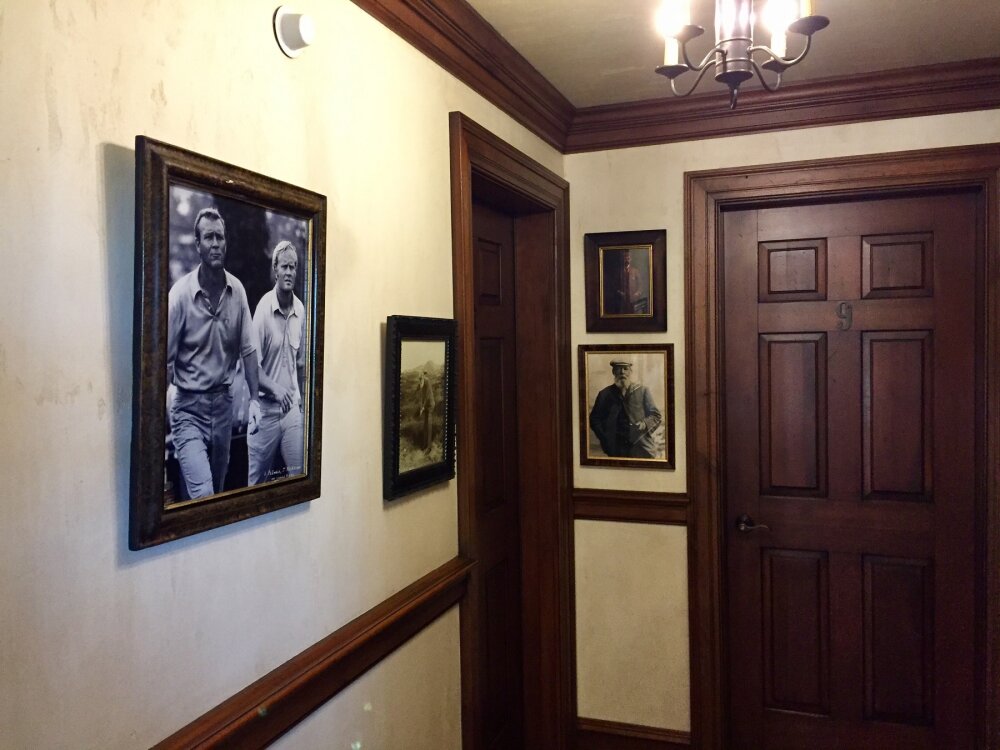
The Facts
Black tees (7,800 yards; Men: 77.9 Rating/145 Slope)
Blue (7,174; M: 75.0/139)
Green (6,754; M: 73.2/135)
White (6,233; M: 70.5/129 W: 75.5/131)
Gold (5,082; W: 69.2/118)
Rated and Sloped Green/White (6,489 yards) and White/Gold (5,581 yards) tee combinations available
Ski Symbol Rating: Black Diamond
Green fees: $180-$280
Caddie fees: $55, plus $65+ gratuity per bag
ErinHills.com


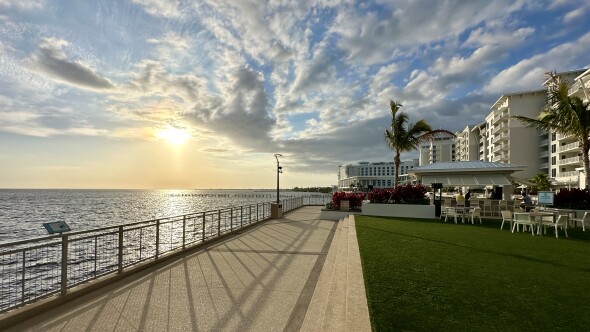









Way to much for public course! Push or pull carts allowed?
Questions: When would one pay green fees of $180; and when would he/she pay $280. That is, after all, a $100 difference.
Why are caddie fees stated as $55, plus $65+gratuity per bag. To me, that means the caddie fee is $120/bag + gratuity. Correct? And, what is the recommended gratuity for a competent caddy?
Thanks.
I'll just say they do everything right from the moment you make your tee time to the moment you leave. The stay & play packages are great, food and drinks are great too.
Writing a review from the U.S. Open tees is absurd - gives no perspective from the green or blue or even white tees which all have pretty strong rating slope numbers. Plus when you add the green and caddie fees together (with the vague
gratuity number - you mean you are expected to give a higher gratuity than the
base fee - don't want to sound cheap but that is unheard of elsewhere) one is
looking at almost a $500.00 experience.